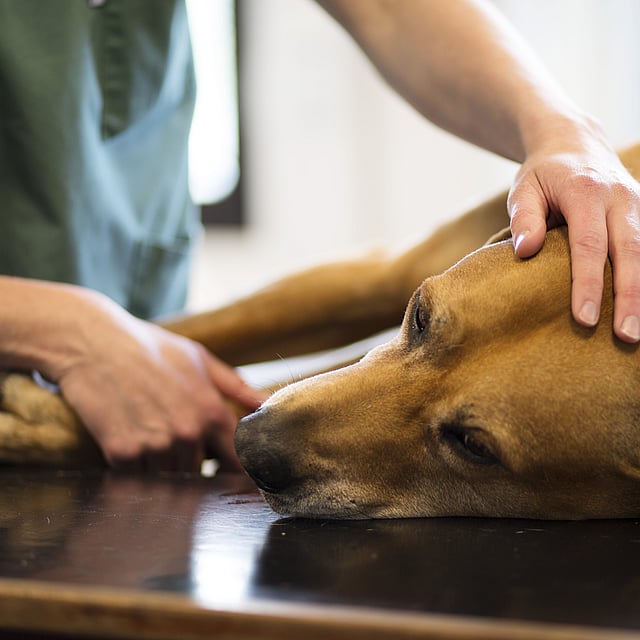Computed tomography (CT) is a cross-sectional imaging technique that uses radiation (x-rays). In modern helical CT scanners, the x-ray tube is continuously rotating around the examination table, which is simultaneously moving through the imaging plane. Multiple images of the body part of interest are obtained within a very short time. The data is converted into transverse images of the region examined, i.e. the body is virtually cut in slices and is visible without any summation. The images are similar to radiographic images, but the tissue can be visualized and evaluated in more detail, because different tissues have a different density, meaning they are visible in different shades of gray. The helical CT scanner of the AOI Center obtains eight slices of the body at a time, so that the examination of any area of the body is performed within a few seconds.
Procedure
Because the patients are not allowed to move during the examination, a short general anesthesia is necessary. Unfortunately, horses cannot be scanned with CT. Our CT table was not designed for heavy patients like horses.
First, a scout view is obtained to select the region of interest. Then, the actual examination starts with a so-called non-contrast study to get series of transverse images of the body part examined. In most cases, injection of contrast medium is necessary to get a diagnosis. The contrast medium contains iodine and is markedly attenuating the x- rays. After the injection of contrast medium into a peripheral vein, the body part of interest is scanned again (so called post-contrast study). On the one hand, blood vessels (arteries and veins) can be judged adequately. On the other hand, tumors and areas of inflammation are better delineable and more detailed information about their perfusion and composition are gained, which can be important for therapy and prognosis in the individual patient.
The CT study lasts approximately ten to twenty minutes, depending on the question. The series of CT images are then analyzed by our radiologists. The referring veterinarian gets a report and a CD with the CT images, so she or he can discuss with you the ideal treatment for your animal.
Indications
In human medicine, computed tomography is one of the most important imaging modalities. In veterinary medicine, CT is getting more and more common as well, especially if changes are not adequately visible radiographically and ultrasonographically or if more detailed information about localization, delineation and type of the changes are necessary for treatment planning. Some of the multifaceted applications of CT are mentioned here as examples.
Head:
The multiple, small head bones are super-imposed on regular x-ray images. In some cases, visualization of the head without summation is important, e. g. after a car accident (Are there any skull fractures? Are the jaw joints or the brain involved?) or in case of a middle ear disease. Tumors of the brain, the nasal cavity and the bones can be evaluated and inflammation and congenital malformations can be visualized.
Chest:
CT is widely used to search for tumor metastases in the lung. Because of the missing summation of the intrathoracic structures including the lung, very small metastases or enlarged lymph nodes can be found earlier than with radiography. Occluded lung vessels (pulmonary thromboembolism), inflammatory or neoplastic lung changes are visible as well.
Abdomen:
In general, all abdominal organs can be examined. However, the visualization of abdominal vessels after contrast medium injection is of special interest. The intravenous injection of contrast medium helps to find congenital or acquired malformations of vessels (so called porto-systemic shunts). On the basis of the CT images, the surgeon can plan the ideal surgery for every individual patient. Another indication for abdominal CT is to check for function, integ- rity, position and content of kidneys and ureters.
Musculoskeletal system:
The advantage of CT to image spine and joints is the lack of superimposition of the structures. Fractures and tumors of the spine and disk prolapses can be visualized and involvement of the spinal cord can be judged. Developmental and hereditary changes like osteochondrosis of the sacrum and elbow dysplasia are also on the list of indications for CT, especially if radiographs are not conclusive.
